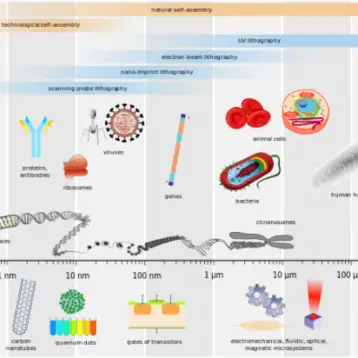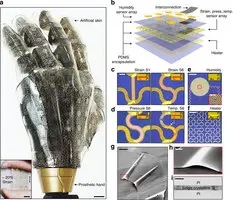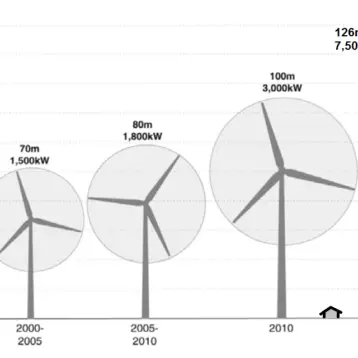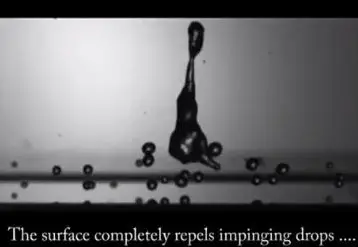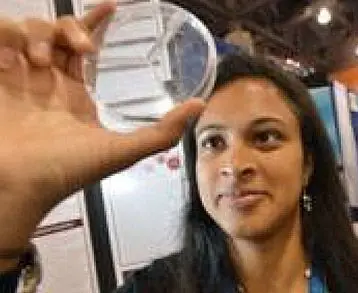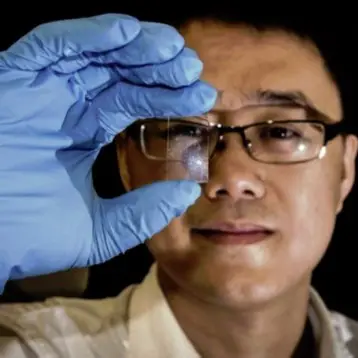Researchers from Tsinghua University and Beijing University have recently developed a thin film based on carbon nanotubes (CNT) that could replace conventional magnetic loudspeakers. By applying an audio frequency current through the CNT, the loudspeaker can generate sound with wide frequency range, high sound pressure levels (SPL), and low total harmonic distortion (THD). The uniqueness of this advancement is that the films are flexible, stretchable, transparent, and can be tailored into many shapes and sizes, freestanding or placed on a variety of rigid or flexible insulating surfaces.
 |
A4 Carbon nanotube thin film
loudspeakers (Credit: Lin Xiao) |
|
Adding to those features, this future loudspeaker has a simple structure, not consisting of any moving parts or magnets. Conventional loudspeakers include at least a cone, a voice coil connected to the apex of the cone, a permanent magnet attached to the loudspeaker’s frame, and an enclosure. By applying an audio current waveform to the voice coil, an audio frequency movement of the cone is generated due to the magnetic interaction between the voice coil and the magnet.
The thin CNT films are created using two simple
electrodes, and several films can be put together to make a large area loudspeaker. A cylindrical cage-like CNT thin film loudspeaker can also be shaped to emit sound in all directions. A
sinusoidal voltage is applied across the two electrodes to create clear and loud tones.
Sound generation mechanism of the CNT film can be understood with the aid of a
thermoacoustic picture. The alternating current from the two electrodes periodically heats the CNT thin films, resulting in a temperature oscillation. This fluctuation excites the pressure to oscillate in the surrounding air, resulting in sound generation. The mechanism that produces the sound is not the mechanical movement of the film, but the
thermal expansion and contraction of the air in the vicinity of the thin film.
 |
Testing of the acoustic performance
of the CNT thin film loudspeaker uses
this schematic illustration of the
experimental setup (Credit: Lin Xiao). |
|
The most promising property is the stretch-ability of the film. Using springs (which double up as electrodes), the film can be uniformly stretched up to a maximum of 200% of its original size and with this, the film increases in transparency. This see-through feature could enable the CNT film loudspeaker to be adapted to LCD modules. If the loudspeaker film is mounted on top of a LCD module, transmittance is reduced to 80%, with the view being only slightly darker than usual. However, by stretching the film or by administering a laser treatment, the transmittance increases to 95%. The film can also be applied to the iPod, placed on window glass, or even over paintings to make transparent loudspeakers.
The other important characteristic is the flexibility of the film which can be moulded into any shape and placed onto a range of rigid or flexible insulating surfaces. The loudspeaker films can be placed on flags or even on clothes – to create a speaking or singing jacket. With all these incredible future applications, the project has many more hurdles to cross. The CNT would need to be freestanding and able to be developed into any shape or size.
 |
SEM image of the CNT thin film showing
the CNTs aligned in the drawing
direction (Credit: Lin Xiao). |
|
There is no doubt that more and more applications using CNT films could be developed as time goes on. The CNT thin films can also be made into small area devices such as earphones and buzzers. This technique might open up new applications and approaches to manufacturing loudspeakers and other acoustic devices.
Additional information about the CNT film loudspeaker can be obtained on this
website.





